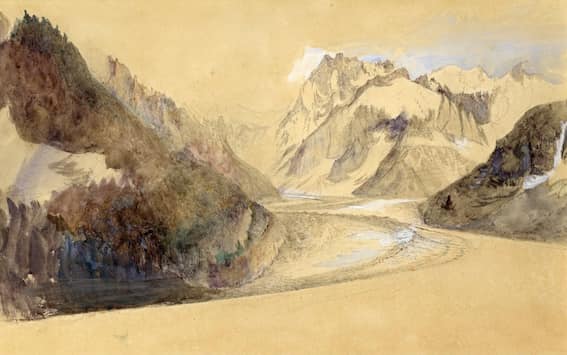Ruskin’s motto was ‘To-day’. He believed that the way we see things now will shape the way we think and behave in the future.
His intense processes of visual observation resulted in explorations of what Ruskin called ‘the golden stain of time’; how past, present and future interact with and shape each other, and inform our sense of ourselves.
While conscious of its limitations, Ruskin embraced cutting-edge optical technologies in his work - including the ‘the most marvellous invention of the century, the daguerreotype’ (Works 3.210 n), the cyanometer, the microscope, telescope and camera - that were transforming ideas of time and space in the 19th century and questioning belief in the quantifiable world of objects and evidence-based knowledge.
The Ruskin Whitehouse Collection includes 125 daguerreotypes, including some of the earliest known images of Venice and the Alps, dating from the 1850s.
John Ruskin, Diary Notebook (MS 11)
John Ruskin; Frederick Crawley, Chamonix. Mer de Glace, Mont Blanc Massif, 1854
John Ruskin, Mer de Glace, 1849





